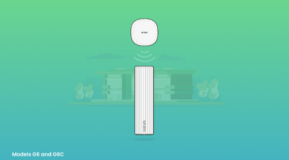
In part 1 of Aruba Sensors: Behind the Scenes, I talked in detail about the kind of effort, mindset and motivation that went into designing the UXI sensors.
Once we decided on the sensors’ design the next big challenge was to enable effortless deployment. This blog will talk about our experience in breaking down some complex barrier around sensors’ deployment and packaging, and our overall approach to problem solving.
3. Zero-touch deployment, take two
When our previous sensor powers on for the first time, it uses cellular connectivity to automatically download configuration from the UXI cloud—for example the name and password of the Wi-Fi network it needs to test. It is true “zero touch deployment.” It feels like magic, but it is expensive to implement.
Hard constraint
We decided to build two G-Series sensor variants: one with cellular connectivity—the "C” variant, for cellular/LTE—and one without—the “E” variant, for Ethernet only.
Both variants had to have zero-touch deployment. The “C” variant would use LTE to download its configuration automatically. We had hoped the “E” variant would use Ethernet to do the same.
Unfortunately our hopes did not survive contact with reality:
- Most organizations’ Ethernet networks don’t allow untrusted devices to connect—devices need a certificate or credentials installed first.
- Even if the sensor can connect to the wired network, many organizations restrict access to cloud services—including ours—in the name of security.
- Many organizations don’t have Ethernet ports available at all for new devices.
We finally accepted that “E” variant sensors couldn’t rely on Ethernet connectivity. How then could they download configuration with “zero effort?”
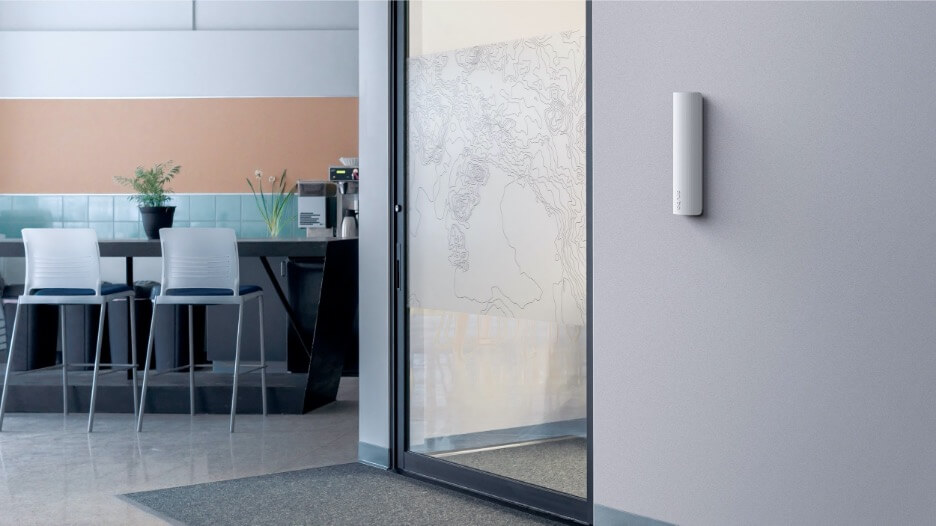
How could we deliver zero touch deployment with the UX-G5E when it has no Ethernet connectivity?
Experience first
We considered so many ideas for how the sensor might connect to the UXI cloud and download config settings.
We rejected all of them, including:
- Having installers preconfigure sensors using an unrestricted Ethernet connection. Rejected: The whole point of zero-touch deployment is to avoid this! Imagine having to unbox 1,000 new sensors, connect and configure them, package them up again, ship them around the world, keeping track of which sensors go where.
- Having installers create a temporary, specially-named Wi-Fi network—for example using their phone as a hotspot—that sensors are programmed to connect to. Rejected: A potential security risk.
- Embedding a mechanism in Aruba’s Access Point software that automatically detects and configures sensors. Pretty cool…but rejected: UXI should offer a great experience on any network, Aruba or otherwise.
- Starting the sensor in “soft AP” mode and having installers connect their phones to it. Alexa and other home products take this approach. Rejected: Doing this hundreds of times would not be fun.
- Using an app to actively pair with a sensor via Bluetooth, and transfer config data. Similarly rejected: Pairing can be frustrating and time-consuming.
We cooked up wild, impractical ideas: a sub-1GHz mesh network between sensors allowing them to reach all the way across a campus if necessary to a sensor or IoT gateway with Internet connectivity.
We were stumped and time was running out. We started reconsidering rejected options.
Nothing felt right. In a moment of exasperation, my cofounder Ross and I decided: “You should just be able to open an app, walk around—no pairing—and sensors should set themselves up!”
We both knew this would be the right user experience, even though we didn’t know how to achieve it. We refocused our efforts on solving for this specific experience.
End-to-end encryption
Within this more constrained problem, the team felt even freer to experiment: one of our more creative engineers prototyped sending data via a rapidly flashing smartphone screen to a light sensor attached to the device. Eventually we homed in on an overlooked piece of Bluetooth functionality.
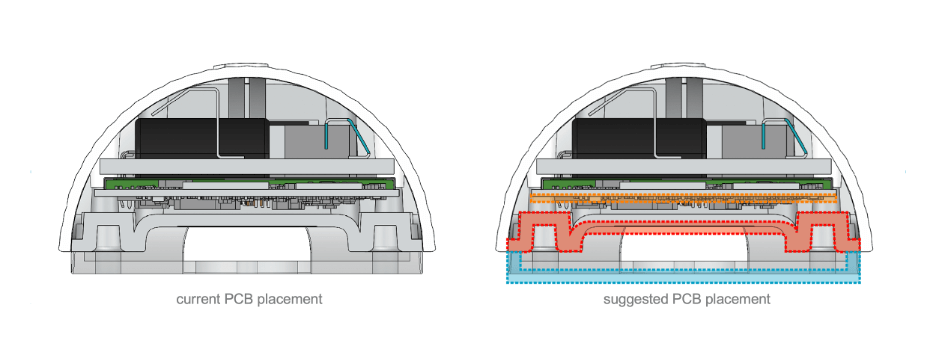
While working on the sensor’s hardware, we were designing and building its software.
Many of us are familiar with Bluetooth “pairing,” which requires user input (e.g. a four-digit code) to establish a trusted, encrypted link between two devices—for example a phone and headphones. But there’s another more public, unencrypted way of communicating using Bluetooth Low Energy (BLE), which can be initiated via software on a phone and doesn’t require any user input.
We initially didn’t even consider BLE without pairing, because the communication is unencrypted and can be eavesdropped. However, the user experience we defined forced us to reconsider.
Because we control all the software involved—on the sensor, the app, and the cloud—we are able to securely encrypt all the data moving over that Bluetooth connection, all the way from the cloud to sensor, and back.
The net result provides the same security as pairing, but without the need for user input. In other words, zero touch. We got to work on the app.
Magic
With just a few short weeks until mass production, I powered on the latest “E” variant sensor, logged into the new Aruba UXI app, and placed my phone on the desk.
Within about 10 seconds, the app “found” my sensor, authenticated it, and showed that it had configuration settings in the cloud. The sensor needed those settings to connect to Wi-Fi.
A progress bar appeared. The app was downloading the encrypted configuration and transferring it to the sensor. A few seconds later, a celebration animation popped across the screen. The sensor had used the new configuration to connect to Wi-Fi successfully.
From merely opening the app, the sensor was online in just 46 seconds. It felt like magic.
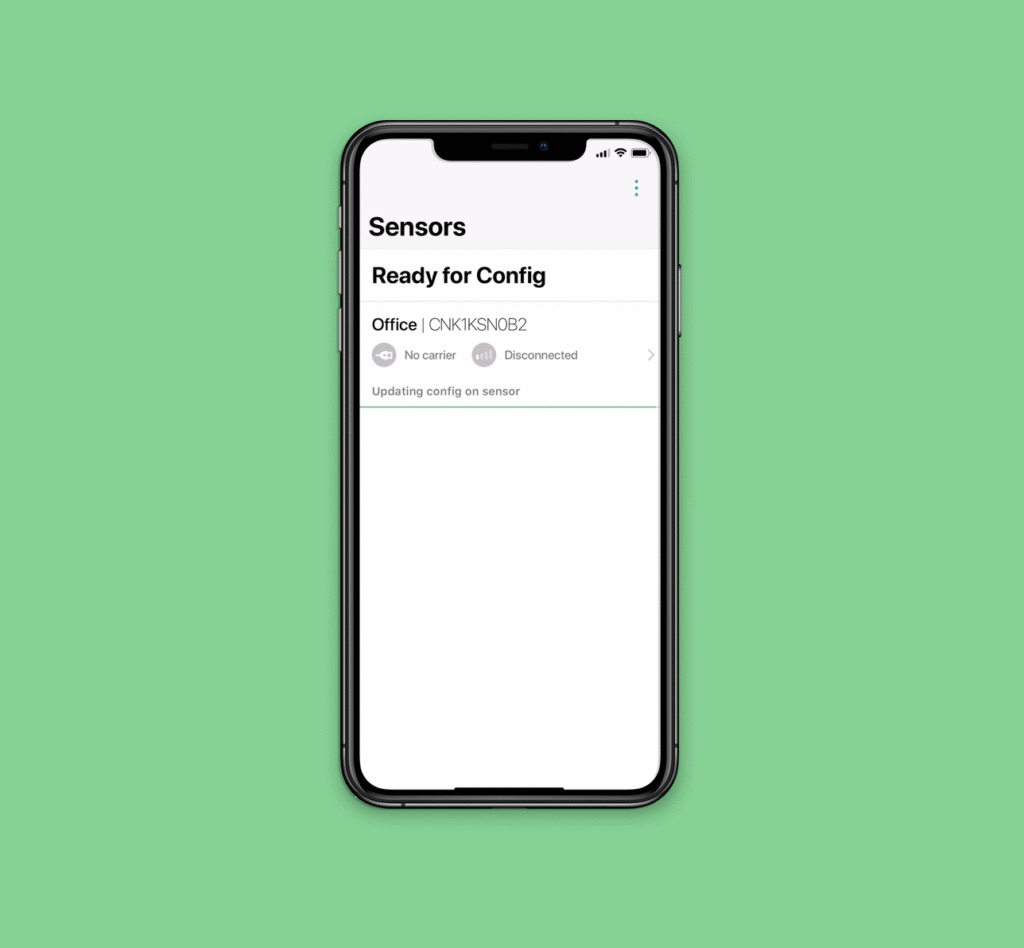
A simple user experience usually requires a lot of effort and complexity beneath the surface. Even the animation took dozens of tweaks before it finally felt “right."
4. What’s in a box?
People form conscious and unconscious perceptions about a product—and its value—when they see it and touch it for the first time. And at that first moment, it’s still in the packaging.

Packaging concept, similar to final packaging design.
At many networking vendors, packaging is designed and owned by the supply chain team. Accepted wisdom is that packaging is a necessary evil—a cost to be minimized. In fairness, most of the people interacting with packaging are installers, not the customers making the buying decisions.
However, for UXI, a huge proportion of the network engineers interacting with our product—particularly during trials or pilots—are at a minimum key influencers in the buying decision. We wanted our packaging to create a first impression that does justice to the new sensors.
Packaging is a product
When we designed our first sensor, I asked an ex-Apple engineer who had built their flagship products: What mistakes should I avoid?
“Everyone leaves packaging to the last minute,” she told me. “Treat the packaging as if you’re building a separate product and start early. Unless you want terrible packaging.”
We didn’t heed her advice closely enough the first time. Our first sensors’ packaging offered a great unboxing experience for most customers, but we received too many reports of the packaging being damaged during shipping. Not a great first impression for many customers. We should have tested and refined the packaging for longer.
We designed the new packaging like we designed the new sensors. We first thought carefully about what we wanted the packaging to achieve—the problem to solve. We wanted no visible supports cluttering the inside, which would subconsciously highlight our commitment to simplicity to new users. We also wanted it to be robust. We tested and refined the new design for months.
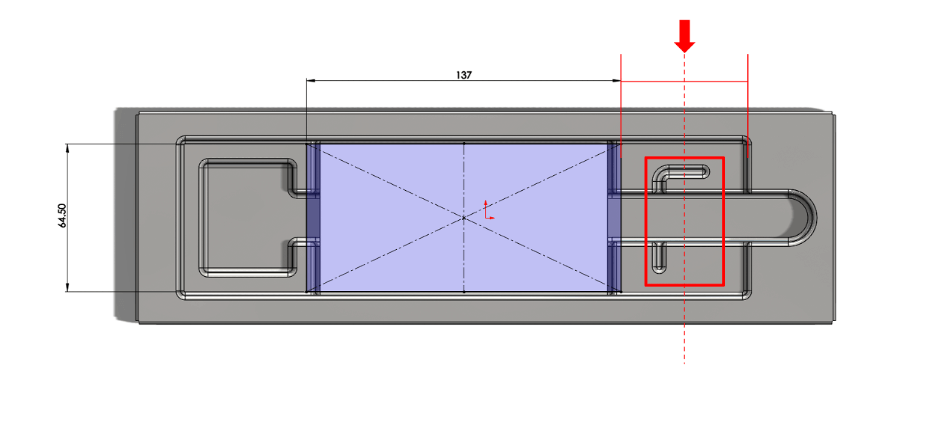
An interior molded piece. The packaging consists of folded cardboard, molded cardboard, brochures, tools, and more—each of which needs to be defined, designed, engineered, tested, refined… just like any other physical product.
When a customer lifts the padded lid of the new sensor’s long rectangular kraft cardboard packaging, the only thing visible is a white sensor that looks like it is floating in the center of the box. Simplicity itself. Beneath the sensor: a custom-colored Aruba Orange torx wrench for the mounting bracket, a small bag of screws and anchors, and a white envelope—containing instructions and a couple of surprises—labeled “Start here.”
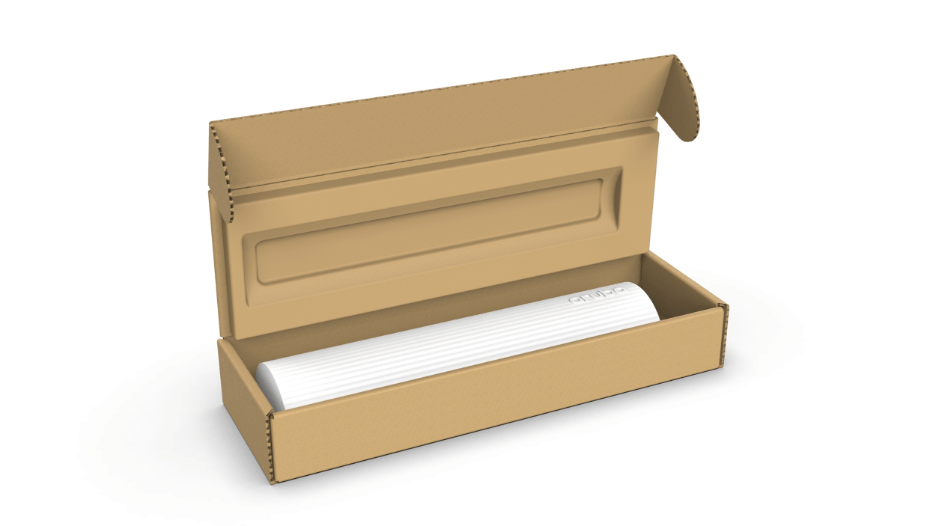
The sensor “floats” in the middle of the packaging; preserving structural integrity took some creative engineering.
Despite beginning early, the very last change we made before the sensors began mass production was one final tweak to the packaging. Packaging really does take longer than you expect.
5. Looking back
You can draw a straight line from our early aspirations at Cape to these new sensors. They are the culmination of our initial hypotheses—simplicity and zero-touch deployment—and our drive to reimagine what our products could be.
Our pattern
I see a pattern playing out, again and again, in our approach to the design challenges we’ve tackled:
- Figure out which problems, if solved, would have the biggest impact for customers. Test and validate your hypotheses early.
- Forget about what others are doing. Their thinking will constrain yours.
- Explore. Seemingly impossible ideas can help you think about the problem differently. Ego is an idea killer—good ideas come from anyone and anywhere. Fertile ground lies just beyond your existing knowledge and experience—few others are looking there.
- Don’t settle for your first solution. Is it as simple as you can make it (and no simpler)? Will people only like it, or will they love it?
- Care. “God is in the details” and “the devil is in the details” are both cliches for a reason. Details matter. Care enough to keep pushing until it’s as good as you can make it.
The first four points—defining the problem and solution—can be done by relatively few people, at least theoretically. The fifth—caring—takes the whole team. It’s extremely hard to make an apathetic team start to care. Caring takes extraordinary people, good leaders, and the right culture.
Endings and beginnings
The journey of designing and building the new G-Series sensors took a small core team, plus dozens of collaborators from multiple teams across Aruba and our partners, tens of thousands of hours. Each sensor coming off the production line begins a new journey with our customers.

Aruba UXI G-Series sensor.
I’ve barely hinted at all the work from all our software engineers, mechanical engineers, electronics engineers, firmware engineers, program managers, product managers, regulatory compliance testers, vendor managers, logistics managers, quality assurance engineers, and the many other professionals whose single-minded dedication brought these complex products to life.
I’m grateful for and proud of their drive to leave no question unasked, no idea unconsidered, and no assumption unchallenged—and above all how much they care about making the best products they can.
Aruba User Experience Insight helps IT teams ensure their end-users experience great network and application performance. Aruba UXI G-Series Sensors are available from Aruba partners around the world.


